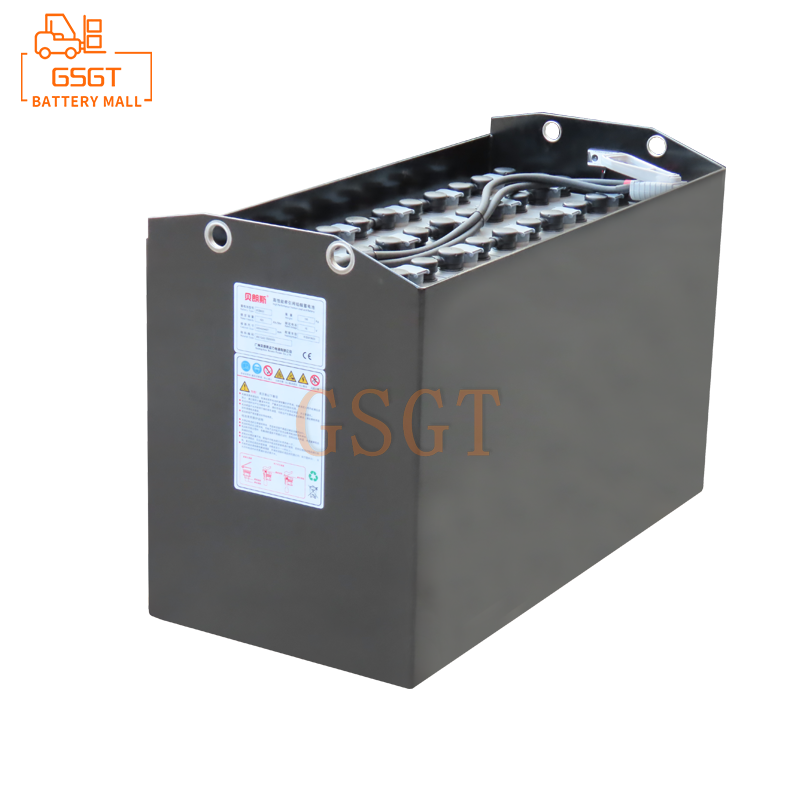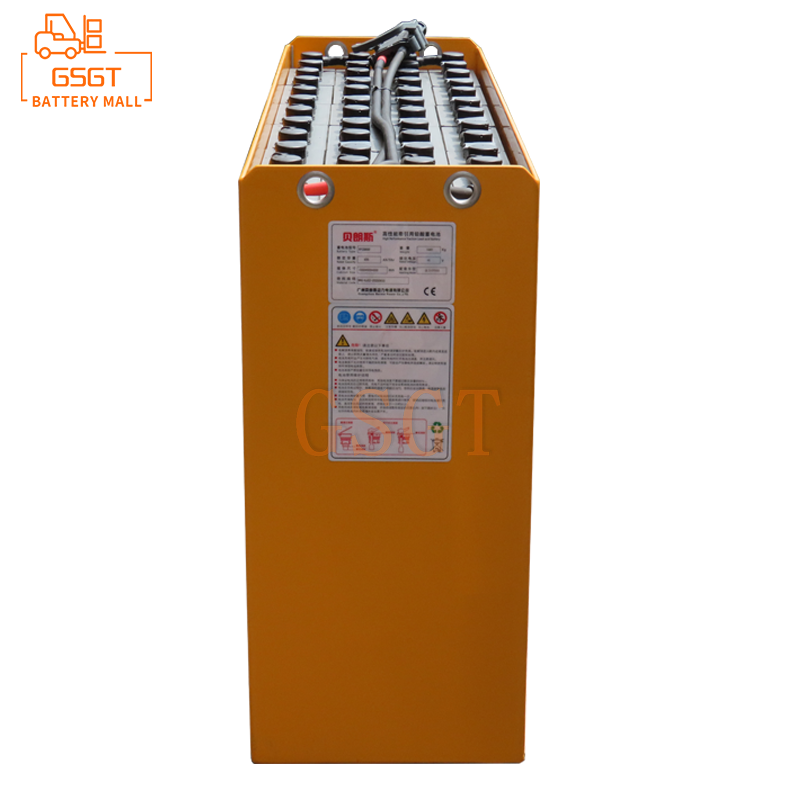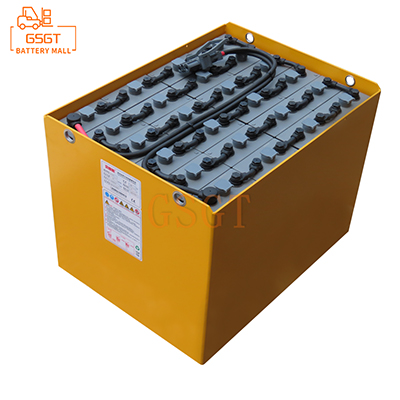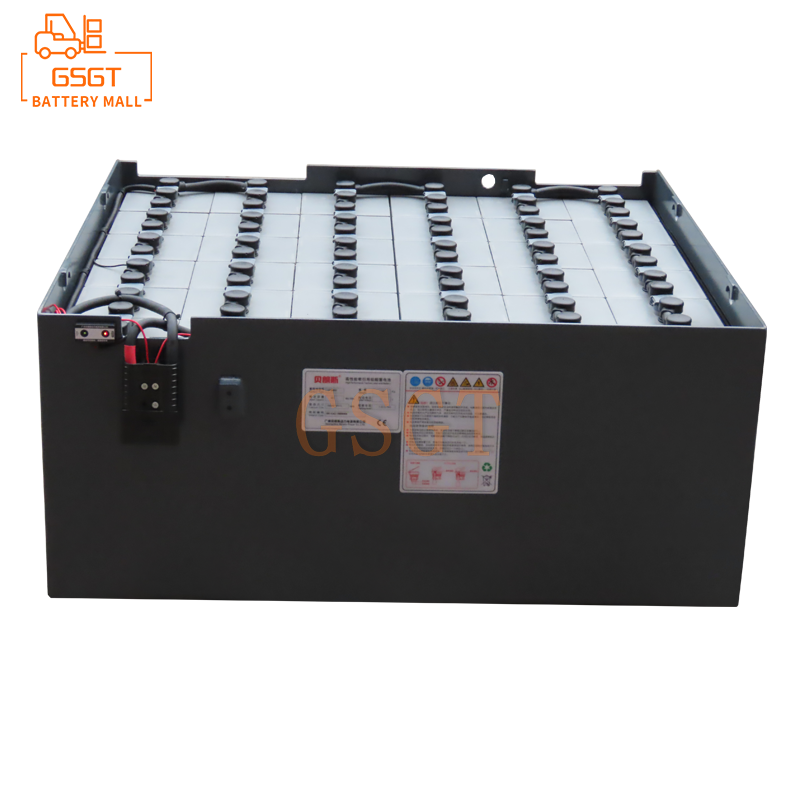Time:2025-04-25 10:16:31
Browse:715
Abstract
This article conducts an in-depth cost-performance analysis of lead-acid batteries for forklifts, comprehensively elaborating on their characteristics in terms of performance, cost, and maintenance. By comparing them with other types of batteries, it dissects their advantages and limitations in different application scenarios, aiming to provide practical reference information for forklift users, enterprise decision-makers, etc., and assist in the rational selection of forklift batteries. Improve operational efficiency.
1. Introduction
In the modern logistics and warehousing industry, forklifts, as indispensable handling equipment, the performance and cost of their power systems have a crucial impact on the operational efficiency and economic benefits of enterprises. Forklift lead-acid batteries, as one of the most commonly used power sources for forklifts, occupy an important position in the market due to their own characteristics. However, with the continuous development of new energy technologies, more and more types of batteries have entered the market, and the cost performance of forklift lead-acid batteries has become the focus of attention for many users. An in-depth analysis of the cost-effectiveness of lead-acid batteries for forklifts is of great practical significance for enterprises to rationally configure forklift equipment and reduce operating costs.
2. Basic Characteristics of Lead-Acid Batteries for Forklifts
(1) Working Principle
The working principle of lead-acid batteries is based on electrochemical processes. During discharge, lead dioxide at the positive electrode and lead at the negative electrode undergo chemical reactions with sulfuric acid in the electrolyte to generate electrical energy. During charging, under the action of an external power supply, the above reaction proceeds in reverse, restoring the active substances of the electrodes and thus enabling the battery to be recycled.
(2) Structural Composition
Forklift lead-acid batteries are mainly composed of positive and negative plates, separators, electrolyte, battery cases and other parts. The positive and negative plates are the core components of a storage battery, and their quality and performance directly affect the capacity and lifespan of the battery. The separator is used to separate the positive and negative plates to prevent short circuits and allow ions in the electrolyte to pass through at the same time. The electrolyte is usually a dilute sulfuric acid solution and serves as the medium for chemical reactions. The battery compartment serves to accommodate and protect the internal components.
3. Performance Advantages of Lead-Acid Batteries for Forklifts
(1) Cost advantage
1. Purchase Cost : Compared with other types of batteries, such as lithium batteries, the purchase cost of forklift lead-acid batteries is relatively low. Take the common lead-acid batteries used in forklifts as an example. Their price is usually only one third to one half of that of lithium batteries of the same specification. For some small and medium-sized enterprises with limited budgets, the lower purchase cost makes lead-acid batteries a more attractive option. This enables enterprises to effectively control costs during the initial equipment procurement and invest funds in other key business links.
2. Supporting Facilities Cost : The charging facilities for lead-acid batteries are relatively simple, and the requirements for charging voltage, current, etc. are relatively loose. Enterprises do not need to invest a large amount of funds in building dedicated high-standard charging facilities. They only need to be equipped with ordinary charging equipment to meet their demands. In addition, the recycling system for lead-acid batteries is relatively mature, and the recycling value of used batteries is high, which to a certain extent reduces the comprehensive cost of battery replacement.
(2) Technological Maturity
The development history of lead-acid batteries is long and the technology is already quite mature. From production and manufacturing to usage and maintenance, there is a complete set of standards and norms. Both the manufacturers and the users have accumulated rich experience. In the production process, major lead-acid battery manufacturing enterprises can ensure the stability and consistency of product quality. During the usage process, it is relatively easy for maintenance personnel to diagnose and repair faults of lead-acid batteries, which can quickly solve problems, reduce the downtime of forklifts, and ensure the normal production and operation of enterprises.
(3) High current discharge capacity
In actual operation, forklifts often need to perform frequent starts, accelerations and climbing, which requires the battery to have a strong high-current discharge capacity. Lead-acid batteries perform exceptionally well in this aspect, capable of providing a large current instantaneously to meet the high-load operation requirements of forklifts. In contrast, some other types of batteries may experience performance degradation and shortened lifespan when discharged at high currents, while lead-acid batteries can stably provide power support for forklifts.
4. Performance Limitations of Lead-Acid Batteries for Forklifts
(1) Relatively low energy density
The energy density of lead-acid batteries is relatively low, which means that under the same volume and weight, they can store less electrical energy than new types of batteries such as lithium batteries. Therefore, when forklifts are equipped with lead-acid batteries, their endurance is relatively limited. For some forklift application scenarios that require continuous operation for long periods of time, frequent battery replacement or charging may be necessary. This not only affects work efficiency but also increases labor costs and the difficulty of equipment management.
(2) The maintenance requirements are relatively high
Lead-acid batteries require regular maintenance during use, including checking the electrolyte level, replenishing distilled water, and adjusting the specific gravity of the electrolyte. If not maintained properly, it can easily lead to problems such as sulfation of battery plates and shedding of active substances, further shortening the battery's lifespan. For some enterprises that lack professional maintenance personnel or have weak maintenance awareness, the maintenance work of lead-acid batteries may become a burden, increasing the complexity of operation and management.
5. Comparison of Cost Performance with Other Types of Forklift Batteries
(1) Comparison with Lithium Batteries
1. In terms of cost: Although lithium batteries have a relatively high purchase cost, due to their long service life and high energy density, the average cost per unit of working time during long-term use is not necessarily higher than that of lead-acid batteries. Moreover, lithium batteries do not require frequent maintenance, reducing maintenance costs and labor costs. However, the supporting charging facilities for lithium batteries have high requirements and large construction costs, which to some extent offsets some of their advantages.
2. In terms of performance : Lithium batteries have significant advantages such as high energy density, strong endurance, and fast charging speed, which can meet the long-term continuous operation requirements of forklifts and greatly improve work efficiency. In addition, lithium batteries support fast charging technology, which can replenish a large amount of power in a short time, while lead-acid batteries take a longer time to charge, usually requiring 8 to 10 hours to be fully charged. However, in terms of high-current discharge capacity, lead-acid batteries are no less capable than lithium batteries and can meet the requirements of forklifts' instantaneous high-load operation.
(2) Comparison with Nickel-Metal-hydride Batteries
1. In terms of cost: The purchase cost of nickel-metal-hydride batteries lies between that of lead-acid batteries and lithium batteries, but their cycle life is also relatively long. During long-term use, the comprehensive cost of nickel-metal-hydride batteries is relatively close to that of lead-acid batteries. However, due to their better environmental performance, the cost of disposing of used batteries is relatively low.
2. In terms of performance: The energy density of nickel-metal-hydride batteries is slightly higher than that of lead-acid batteries, and their endurance has also been improved. Meanwhile, nickel-metal-hydride batteries have a relatively high charging and discharging efficiency and also have good adaptability to environmental temperature. However, the high-current discharge capacity of nickel-metal-hydride batteries is relatively weak. Under conditions such as frequent starts and accelerations of forklifts, they may not be able to provide sufficient and stable power output.
6. Influencing Factors of the Cost Performance of Lead-Acid Batteries in Forklifts
(1) Usage Scenarios
1. ** Working time ** : If the forklift's daily working time is relatively short, for instance, no more than 4 hours a day, the endurance capacity of lead-acid batteries can basically meet the requirements, and the relatively low purchase cost makes its cost performance relatively high. However, for scenarios where the daily working hours are long, or even 24 hours of continuous operation is required, the frequent charging or replacement of lead-acid batteries will lead to a decline in work efficiency, an increase in overall costs, and a reduction in cost-effectiveness.
2. ** Working Environment ** : In some low-temperature environments, the performance of lead-acid batteries will be significantly affected, with capacity decline and discharge efficiency reduction. In an environment with suitable temperature, lead-acid batteries can better perform and have a relatively high cost performance. In addition, in harsh environments such as high humidity and excessive dust, the maintenance difficulty of lead-acid batteries increases, which also affects their cost performance.
(2) Maintenance and management level
Good maintenance and management can effectively extend the service life of lead-acid batteries, reduce usage costs and improve cost performance. If enterprises can establish a complete battery maintenance system, regularly inspect, maintain and service the batteries, and promptly identify and solve problems, they can fully leverage the performance advantages of lead-acid batteries. On the contrary, if the maintenance and management are not good, the lifespan of lead-acid batteries will be shortened. Frequent battery replacement will greatly increase the operating costs and significantly reduce their cost performance.
(3) Market price fluctuations
The main raw materials of lead-acid batteries are lead and sulfuric acid, and their prices are greatly influenced by factors such as market supply and demand and the trend of international metal prices. When the price of lead rises, the production cost of lead-acid batteries increases, and the purchase price will also rise accordingly, thereby affecting their cost performance. Meanwhile, the recycling price of used lead-acid batteries will also fluctuate with market conditions, further affecting the cost of battery replacement for enterprises.
7. Suggestions for Improving the Cost Performance of Lead-Acid Batteries in Forklifts
(1) Reasonable selection and configuration
Enterprises should rationally select the specifications and models of lead-acid batteries based on factors such as the operational requirements and usage scenarios of their forklifts. Under the premise of meeting the work requirements, avoid over-allocation to prevent waste of resources. For instance, for forklifts that carry light loads and operate for short periods of time, lead-acid batteries with smaller capacity can be selected. For heavy-duty forklifts that operate for long periods of time, large-capacity and high-performance batteries need to be selected. At the same time, spare batteries should be reasonably configured to ensure that the forklift can replace the batteries in time during continuous operation and improve work efficiency.
(2) Strengthen maintenance and management
1. Establish a professional maintenance team or provide professional training to relevant personnel to enable them to master the maintenance knowledge and skills of lead-acid batteries. Regularly check parameters such as the electrolyte level, specific gravity and voltage of the battery, replenish distilled water in time, adjust the specific gravity of the electrolyte, and ensure that the battery is in good working condition.
2. Develop a detailed maintenance plan and record-keeping system, documenting the time, content, and results of each maintenance to facilitate the tracking of battery usage, promptly identify potential problems, and take measures to solve them.
(3) Optimize the usage method
1. Arrange the operation tasks of forklifts reasonably, avoid long-term continuous high-load work, and give lead-acid batteries appropriate rest time to extend their service life.
2. Standardize the operation behavior of forklift drivers, avoid unreasonable operations such as sudden acceleration and sudden braking, reduce the number of high-current discharges of the battery, and lower battery wear and tear.
(4) Pay attention to market dynamics
Enterprises should closely monitor information such as market price fluctuations and technological development trends of lead-acid batteries, and adjust their procurement strategies in a timely manner. When the price of lead is low, appropriately increase the purchase volume of storage batteries; At the same time, pay attention to the development of new lead-acid battery technologies, such as the adoption of new plate materials and the improvement of electrolyte formulas, and select products with better performance and higher cost performance.
8. Conclusion
Forklift lead-acid batteries have advantages such as low purchase cost, mature technology, and strong high-current discharge capacity. However, they also have limitations such as low energy density, short service life, and high maintenance requirements. In the comparison of cost performance with other types of batteries, lead-acid batteries have their own advantages and disadvantages in different application scenarios and conditions. Its cost performance is influenced by various factors such as usage scenarios, maintenance and management levels, and market price fluctuations. To enhance the cost performance of lead-acid batteries for forklifts, enterprises need to rationally select and configure batteries, strengthen maintenance management, optimize usage methods, and pay attention to market trends. For enterprises with short operation time, limited budget and low requirements for charging facilities, lead-acid batteries remain a cost-effective choice. For enterprises that pursue high efficiency, long battery life and low maintenance costs, other types of batteries can be considered based on the actual situation. In conclusion, only by fully understanding the characteristics and influencing factors of forklift lead-acid batteries can more reasonable decisions be made to maximize the operational benefits of the enterprise.

$2450

$3810

$3405

$4045

MESSAGE
Professional And Efficient
Security
Affordable Price
Professional Services